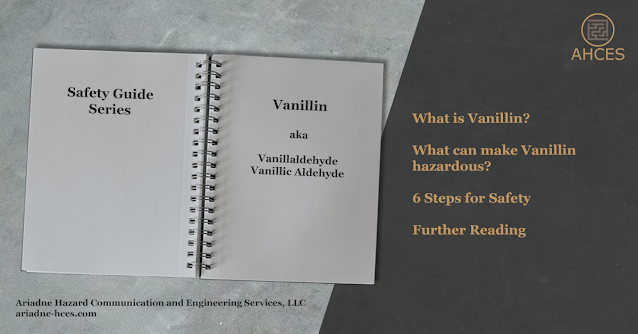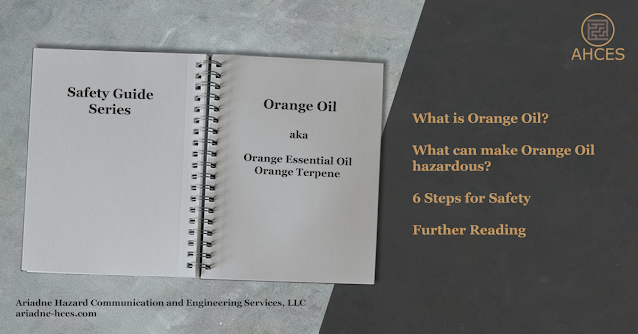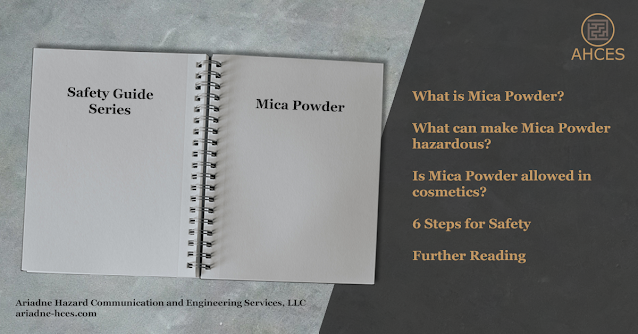Vanillin Safety Guide
What is Vanillin?
Vanillin is an benzaldehyde, also known as vanillaldehyde, vanillic aldehyde, or 4-hydroxy-3-methoxybenzaldehyde. Vanillin does occur naturally in vanilla orchids, as well as some other plants. The synthetic form of vanillin is commonly used as an artificial vanilla flavoring and fragrance.
Vanillin has the CAS Number 121-33-5.
The CAS Number is used to identify vanillin as an ingredient on safety data sheets (SDS) and other safety documentation. When looking for vanillin as an ingredient in products like vanilla flavoring agents, look for the CAS Number in the composition table.
Notable Properties of Vanillin
Vanillin in its solid form is a pale yellow, needle-shaped crystal. When dissolved in ethanol or another solvent, pure vanillin is clear.
Brown vanilla extracts are typically naturally derived from the soaking of vanilla beans in ethanol to extract the soluble components.
What Makes Vanillin Hazardous?
Vanillin is an irritant when concentrated. It can cause serious eye and respiratory irritation. In individuals with known vanilla allergies, vanillin is reported to also cause an allergic skin reaction.
Vanillin is also frequently available dissolved in ethanol, which is additionally flammable.
Vanillin Frequently Asked Questions
Does vanillin dissolve in water?
Vanillin has low solubility in water and high solubility in ethanol.
Does vanillin contain alcohol?
Pure vanillin is a benzaldehyde. It is a solid at room temperature and needs to be dissolved in another liquid for most uses as a fragrance or flavoring agent. Most commercially available vanillin in liquid form is dissolved in ethanol, also known as grain alcohol.
Is vanillin toxic?
Vanillin is not known to be toxic or carcinogenic in humans. As vanillin is the primary flavor and fragrance component in natural vanilla, it can cause allergic reactions to individuals with known vanilla allergies.
6 Steps for Safety
Step 1: Read the Warnings
When working with a product for the first time, always read all the safety documents first. This includes safety data sheets, which should be provided by the manufacturer or importer of the vanillin product. There may also be an OSHA chemical label or a Consumer Protection label on the packaging of the vanillin product. These documents all contain important information on the hazards of the product and instructions on how to mitigate those hazards.
Different compositions in different products may cause additional hazards to be present beyond the properties of product with vanillin as the only active ingredient. As many vanillin fragrances and flavorings are dissolved in ethanol, which is a flammability hazard, be sure to work with adequate ventilation and fire suppression measures in place with products in this category.
Step 2: Prepare Your Workspace
Creating a safe workspace, sometimes referred to as engineering control, is a key component of working safely with any potentially hazardous substance.
Workspace preparation will vary depending on if the vanillin is in solid or liquid form. Both can cause serious eye and respiratory irritation. Liquid vanillin can have additional hazards based on the solvent and has an additional splash hazard, being able to soak into fabric and cause prolonged contact which can worsen irritation.
Step 3: Gather Your PPE
For vanillin in a solid form, such as a powder, you will
need the following PPE.
- Respiratory Protection
- A dust mask meant for organic particles will protect the respiratory system from irritation.
- Eye Protection
- Safety goggles which form a protective seal around the eyes or a combination of safety glasses and a face shield can be used to prevent vanillin dust from reaching the eyes.
For vanillin in a liquid form when dissolved in ethanol
or another solvent, you will need the following PPE. Note that depending on the
solvent used, there may be additional PPE required.
- Respiratory Protection
- A mask meant for organic vapors will protect the respiratory system from irritation.
- Eye Protection
- Safety goggles which form a protective seal around the eyes can be used to prevent liquid vanillin splash from reaching the eyes.
Step 4: Clear Your Workspace
Having a clear workspace is important for safety as it can prevent accidents caused by tripping, as well as allowing you to easily spot any spills.
This is also a good time to ensure all engineering controls are functional. When working with large quantities of liquid vanillin, it is good to have a spill kit to contain liquid spills.
Step 5: Do The Work
If engineering controls and PPE are used properly working with vanillin can be done safely.
Step 6: Clean Up
Dust generation should be avoided when cleaning up solid vanillin. Either a vacuum with a filter or a damp cleaning cloth can be used to pick up spilled any stray solid vanillin while preventing dust generation.
Be sure to dispose of any waste in accordance with local regulations.
Further Reading
The National Library of Medicine has a PubChem Vanillin Summary.
Check out the Safety Guide Series Hub for more safety guides.
Sources Cited
National Center for Biotechnology Information (2024). PubChem Compound Summary for CID 1183, Vanillin. Retrieved February 19, 2024 from https://pubchem.ncbi.nlm.nih.gov/compound/Vanillin.
National Center for Biotechnology Information (2024).
PubChem Annotation Record for VANILLIN, Source: Hazardous Substances Data Bank
(HSDB). Retrieved February 19, 2024 from https://pubchem.ncbi.nlm.nih.gov.





Comments
Post a Comment